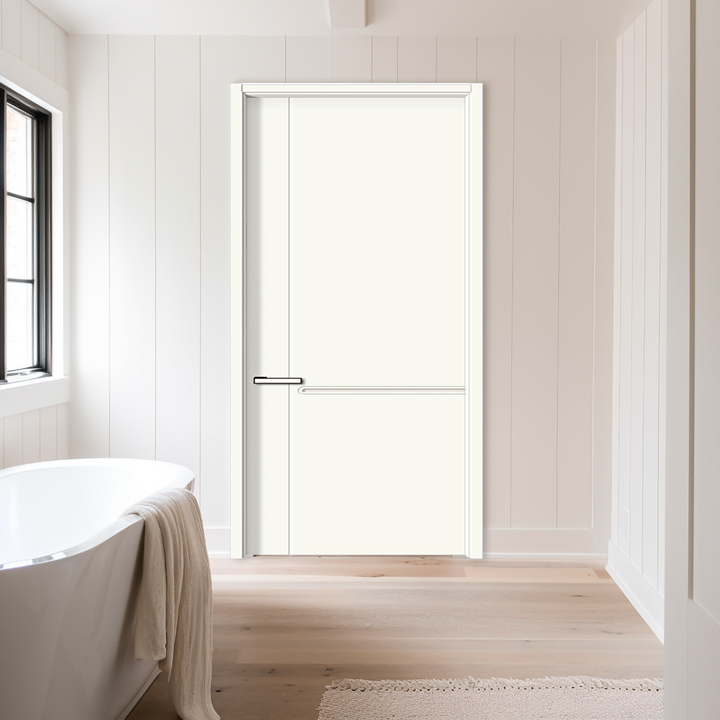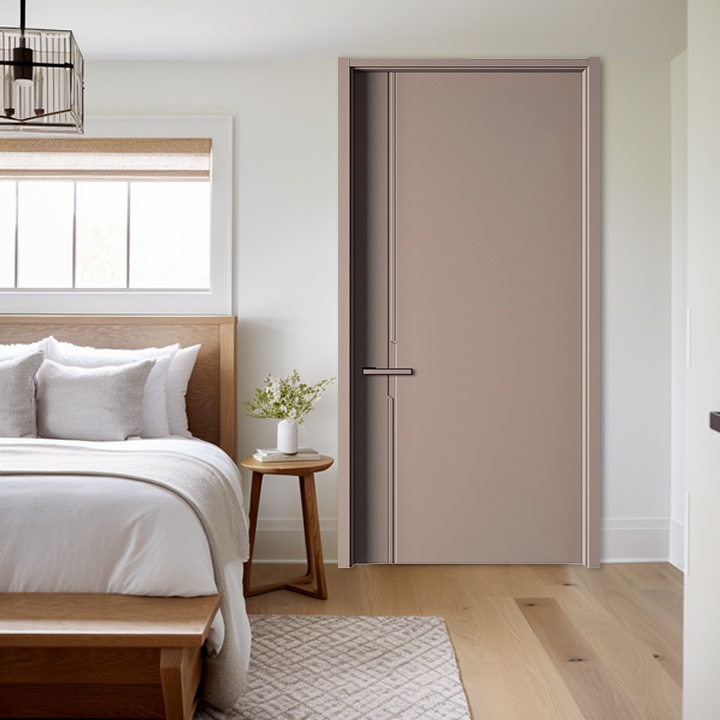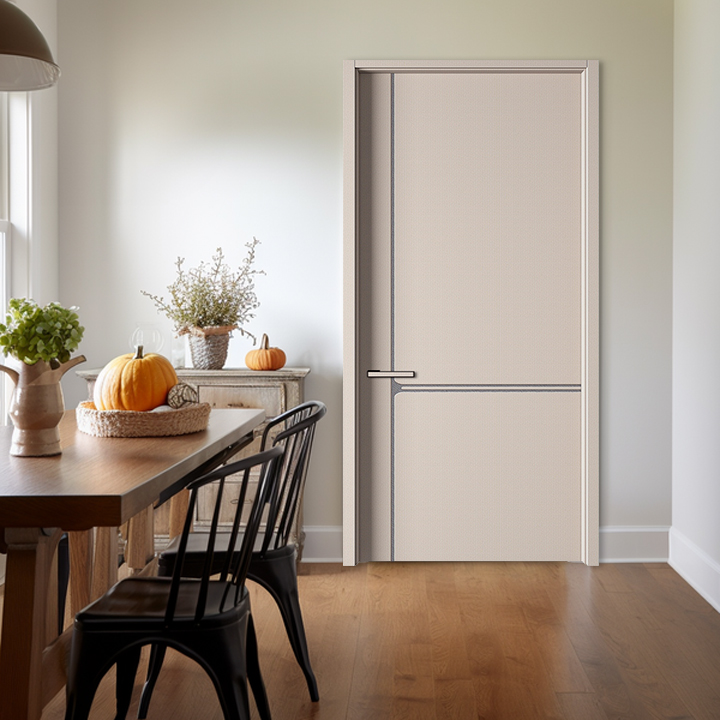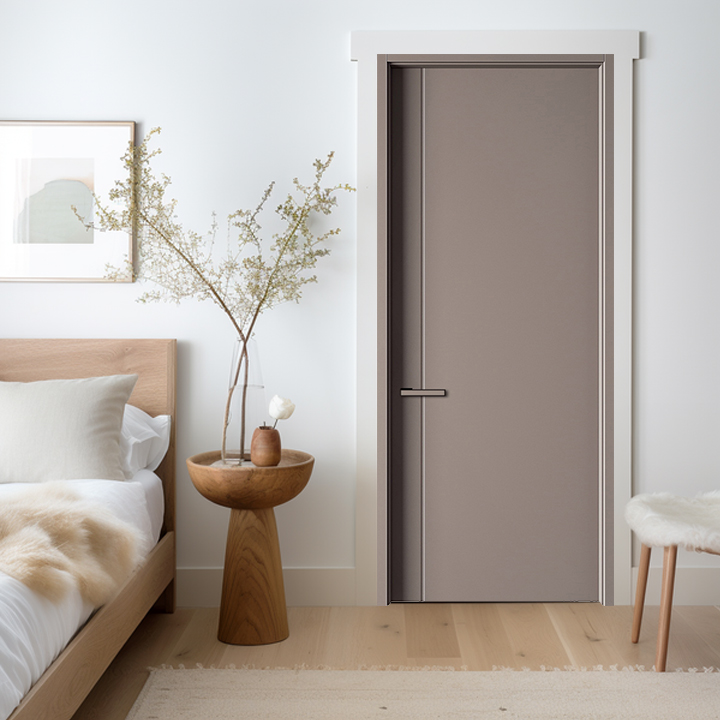The impact of light on the selection of interior doors is mainly reflected in the following aspects:
- Differences in color perception
Light can cause differences in color perception. Sample doors in stores are usually displayed under specific light, and may appear brighter or change color due to light exposure. When actually installed at home, the color of the door may appear different due to different light conditions.
- Differences between natural light and indoor light
Natural light and indoor artificial lighting have different effects on the color presentation of doors. Natural light changes with time and seasons, which affects the color perception of doors. Indoor lighting may not be able to fully simulate the effect of natural light, causing the color to look different.
- The impact of light on the texture of door materials
The material and texture of the door will also show different effects under different light conditions. For example, a door with a high-gloss surface may be more likely to be dirty or scratched under strong light, but may appear smoother and neater under soft light.


The influence of humidity on the selection of interior doors is mainly reflected in the following aspects:
- Stability of wooden doors
Excessive or low humidity will cause deformation and cracking of wooden doors. The appropriate humidity range is generally between 30% and 40%. Within this humidity range, wooden doors can maintain good stability and avoid deformation.
- Service life of wooden doors
In high humidity environments, wooden doors are prone to water absorption and expansion. Long-term exposure to high humidity may cause changes in the internal cell structure of the wood, resulting in deformation and arching of the door panels, affecting the use effect and aesthetics, and shortening the service life.
In low humidity environments, wooden doors are prone to shrinkage, and gaps may increase, cracks may appear on the surface, and extreme dryness may also cause wooden doors to dry and crack, damaging the integrity of the door.
- Moisture-proof performance of wooden doors
In a humid environment, small water droplets may appear on the surface of wooden doors, and mold may grow in severe cases. Therefore, when purchasing, you need to pay attention to the moisture-proof performance of wooden doors, such as choosing moisture-proof panels, processes, and waterproof coatings.
The impact of security on the selection of interior doors is mainly reflected in the following aspects:
- Anti-theft performance
Lock security: The locks of interior doors must have high security, such as magnetic silent locks, to ensure that the door can be firmly locked when closed to prevent illegal intrusion.
Anti-pry design: There should be a tight anti-pry design between the door leaf and the door frame to increase the safety factor of the door and prevent it from being pried open.
- Durability and stability
Material selection: High-quality interior doors usually use durable materials such as solid wood composites. These materials are not only beautiful, but also have high strength and stability, can resist external impact, and ensure home safety.
Hardware accessories: The quality of hardware accessories such as hinges and locks also directly affects the safety of the door. Choosing strong and durable hardware accessories, such as flat hinges, can ensure that the door is stable and reliable during use and not easily damaged.
- Fireproof performance
Fireproof materials: Some interior doors are made of fireproof materials, which can effectively block the spread of fire when a fire occurs, and buy more escape time for residents.


We know that factors such as light, humidity, and safety will affect people’s decisions when purchasing interior doors. In addition to the above three factors, what other factors will affect people’s decisions when purchasing interior doors?
When purchasing interior doors, in addition to factors such as light, humidity, and safety, the following factors will also affect people’s decisions:
- Door style and color
Style selection: The style of the door should be simple and elegant, avoiding overly complex patterns and lines so that it can remain timeless for a long time.
Color matching: The color of the door needs to be consistent with other home elements such as skirtings and door pockets to ensure the overall harmony and unity of the tone.
- Door material and filler
Material selection: Solid wood composite doors are preferred, which have the texture of wooden doors and are not easy to deform, and are more cost-effective.
Filler considerations: Choose doors filled with solid wood, which are thick, durable, and have good noise reduction effects. Avoid choosing fillers such as honeycomb paper.
- Door durability and maintenance
Durability: Consider the thickness of the door. Generally, doors with a thickness greater than 4.5 cm perform better in terms of life and sound insulation.
Maintenance convenience: Choose painted doors instead of paint-free doors. Painted doors are not easy to fade or peel, and the environmental protection level meets the standards, which makes them easier to maintain.
- Door hardware accessories
Hinge selection: Flat hinges are more durable, avoid choosing letter hinges that are easy to loosen, etc.
Lock considerations: Magnetic silent locks are preferred, which make opening and closing the door easy and convenient without making noise.
 Opanpan Door Skins
Opanpan Door Skins